Old Glengallan in pictures
Megan and Alun visited the Mitchell Library – part of the State Library of New South Wales – in December 2017 to obtain copies of Drake family manuscripts held there and also copies of documents related to the Marshalls and Glengallan. Included amongst these documents were a series of sketches by renowned 19th century artist Conrad Martens and watercolours by Henry Grant Lloyd. The Mitchell Library holds an extensive collection of works by both artists, but we focused on those that depicted the Darling Downs and Glengallan.
Alun photographed the pictures in the reading room of the Mitchell Library. Flash photography is not permitted, but the reading room has wonderful natural light from its extensive skylights and it was a bright December day so it was possible to obtain well lit, shadow free photographs.
These paintings and sketches complement a painting from 1858 by Charlotte Augusta Dring Marshall herself which has been passed down within the family for many generations. The painting is currently owned by a family member in New Zealand who has kindly agreed to it being presented here. And in August 2018, we obtained a colourised engraving from the Australian Town and Country Journal of 19 June 1875.
Interestingly, all but the last of these pictures were produced when Charles Henry Marshall was in residence on Glengallan despite periods of absence during the 1850’s and 1860’s. Taken together, they provide a wonderful perspective on Glengallan in its early years.
Picture quality
Except for the engraving, all the documents show the effects of age to a greater or lesser degree. All are foxed and the paper has yellowed although Charlotte’s painting is only slightly affected. Some also show the effect of staining. One of the Martens sketches of Glengallan appears to have had bleed-through from another document placed behind it or on top of it as the document has darkened noticeably and there is an outline embossed onto the image.
The Lloyd images have darkened bands at the top especially the one depicting the Glengallan homestead. The pigments have also selectively faded. All tones are subdued. The green tones have become much redder with leaves, for instance, being distinctly brown or rust coloured. Charlotte’s painting, on the other hand, retains quite strong colours.
These degradations of the images were carefully removed using the power of modern digital image processing software to yield the images shown here. The process is described in more detail at the end of this article.
The pictures are much clearer and more vibrant, but it is impossible to tell whether the original colours of the Lloyd paintings were exactly the same as shown here because there was no benchmark against which to compare specific colours.
The Conrad Martens and Henry Grant Lloyd images are Courtesy of the State Library of New South Wales. The Charlotte Augusta Dring Marshall painting is courtesy of cousin Daphne. The colour engraving is ©Megan Stevens 2018. See copyright conditions.
Conrad Martens sketches
Three Conrad Martens sketches of and from Glengallan were photographed. On each one he indicated the compass direction of the vista. The first two sketches show the homestead at Glengallan. The third is a vista from Glengallan towards Mount Sturt.
This picture is a pencil sketch labelled Glengallan, C. Marshall Esq., Dec 31, 1851. It is a view to the East from the creek showing the farmstead with Mount Marshall in the background.
The sketch is heavily foxed and stained, but with a lot of patience, yielded the following:
The second sketch is also of the farmstead from the creek. This one is towards the North-West. It is labelled Glengallan, Dec. 30th 1851, C.H. Marshall Esq. It provides a closer view of the farm buildings.
The image is in reasonably good condition and is 11½ x 6¾ inches in dimension. Brightening it up produced the following:
The third sketch shows the vista to the South-East from Glengallan. It is labelled Mount Sturt from Glengallan March 4, 1852. It shows a bark hut under trees in the foreground and the view across the plain to Mount Sturt.
The sketch was used as the basis for a watercolour painting by Martens on his return to Sydney. That painting is held by the Queensland Art Gallery and is titled The bark hut on the plain, Darling Downs, Qld., Mount Sturt from Glengallan. The view is towards the South East from a location on the plain below the Glengallan farmstead. The exact view can’t be reproduced today because the grazing plain was converted to crop land after 1904.
The fourth sketch is a view to the West showing the farmstead. It is labelled Glengallan, C. H. Marshall Esq. March 6, 1852.
This image is not a photograph of the original in the Mitchell Library. It is a photograph of a print of a photograph of the original. I am not sure where the original is located.
More examples of Martens’s sketches and paintings can be found in J.G. Steele’s book Conrad Martens in Queensland. 1
Charlotte Marshall’s painting
The painting is in good condition apart from some minor foxing which has been removed. The colours are still quite vibrant. It is titled Glengallan. Darling Downs. 23 June 1858. It provides a view towards the north from the line of the creek with the farmstead nestled at the foot of Mount Marshall. It presents an elevated perspective showing an extensive kitchen garden not evident in Conrad Martens’s sketches. It also demonstrates the working of the farm with a loaded bullock wagon drawn up to one of the buildings.
Henry Grant Lloyd watercolours
Three watercolours by Henry Grant Lloyd were also photographed. The condition of the paintings suggests that at some stage in the past, they were not stored in a sensitive manner. They have extensive foxing and staining. They also have a stained band at their upper edges that appears to be due either to light damage from the painting sticking out from a binding or to staining from some binding. Nonetheless, they are attractive views of Glengallan and the surrounding area.
The first painting is titled Glengallan, Darling Downs, H.G. Lloyd, Nov. 6, 71. It shows the Deuchar built homestead, the woolshed, and other farm buildings with a view across the plain to the south-west, including cattle grazing below the homestead. The location is in the farm yard close to where the bullock cart is in Charlotte’s painting. The big tree on the left is still there!
The second painting is titled From Glengallan with Mt Dumaresq, H.G. Lloyd, Nov. 6, 71. It shows the view to the east and Mount Dumaresq from high ground on Glengallan. The painter was located on the eastern slope of Mount Marshall. The modern view is from higher up.
The third painting is a view over Warwick titled simply Warwick, Darling Downs, H.G. Lloyd Nov. 1871. It shows the Condamine River with the still lightly inhabited town beyond. The view is to the South from a location on Waterworks Hill. The road coming down to the river is Guy Street (which now stops short of the river). The modern view is from a point about 100 metres further East.
Australian Town and Country Journal Engraving
I found this online for sale and could’t resist it so I bought it for Megan.
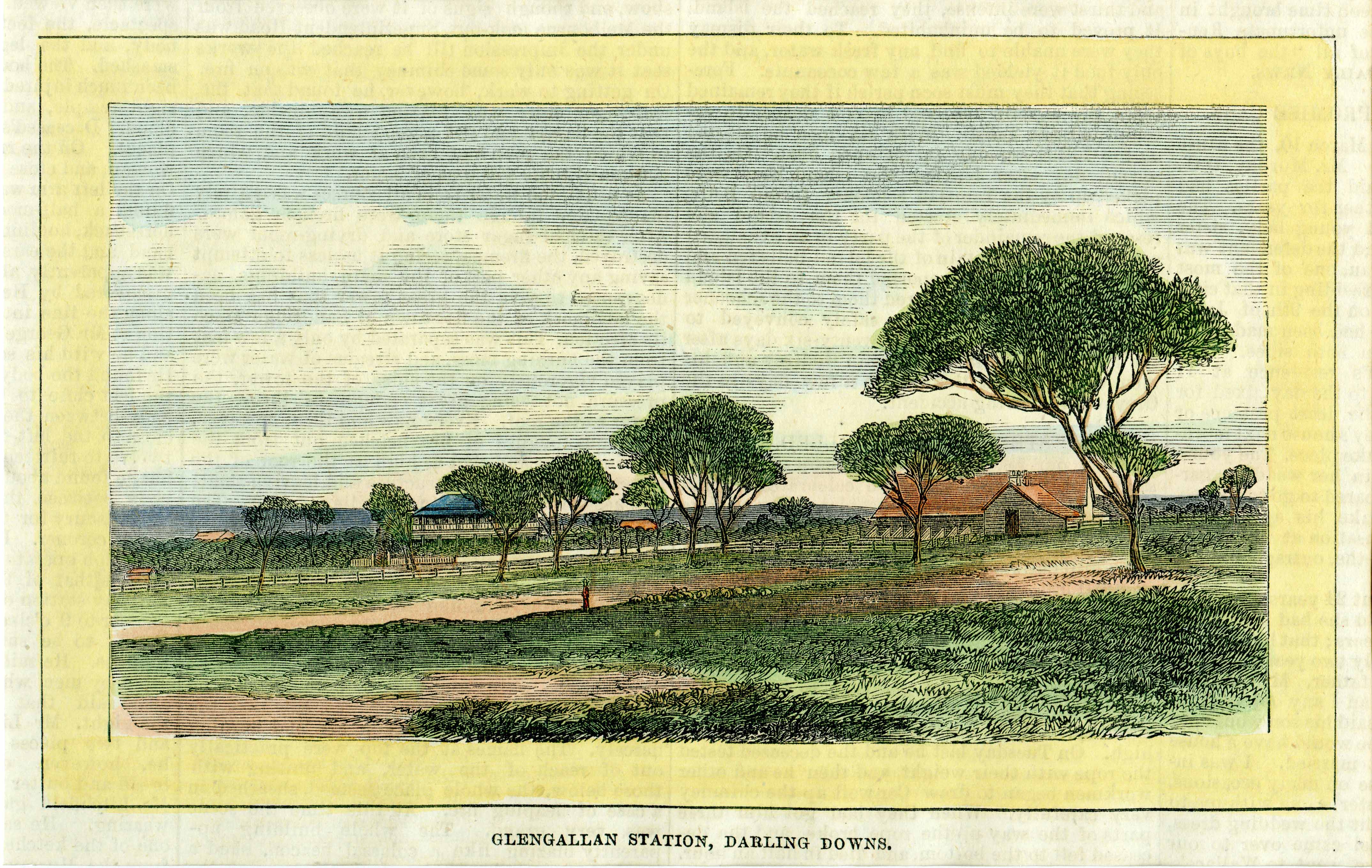
The engraving was printed as part of an article on Glengallan in the Australian Town and Country Journal of 19 June 1875. Someone has clipped the engraving from the Journal and colourised it with what looks like water colours. The printing on the other side can be seen showing through the paper. The article provided an interesting description of the property and its workings:
Glengallan Station, Darling
Downs
GLENGALLAN STATION, the property of Messrs. Marshall and Slade, is located upon the first plateau rising towards Mount Marshall, from Glengallan Creek, and overlooks a vast extent of fertile plains. The creek (a considerable stream), after winding around the base of that mountain, passes through the station, and forms a junction with the Condamine River, about ten miles away ; its meanderings through the plains, being clearly marked by a dotted line of willows, while away to the south-east Mount Sturt and Mount Dumeresque break the line of plain, and add softness and beauty to a fine picture.
Glengallan house is almost palatial in appearance – appropriate shrubberies, drives, walks, and gardens and orchards, kept in admirable condition, which, with offices and stables to match, sum up the home of the opulent squatter.
Upon about 40,000 acres of purchased land, enclosed in a ring fence, depasture about 1000 excellently bred cattle, amongst which are some imported stock and their progeny, of rare beauty and promise; most of the thorough-bred bulls are kept at the head station, in convenient stalls, and attended with great care. There is, however, about a quarter of a mile from the house a cattle-stable capable of holding many head; where, amongst other conveniences too numerous to particularise, a novel appliance exists in the shape of a tramway, which places the food before each beast simultaneously, and saves much hand labour. There are also upon the station 30,000 sheep, including two stud flocks – one Leceisters and the other Merinos. The woolshed has been planned with a view to systematic economy of labour. It is in the form of the letter T, the arms or wings face about south; one wing contains the screens or wooltables for folding the fleeces, numerous bins for the wool, wool-sorters’ office, and woolpress. The other wing is exclusively for shearers, of whom it will accommodate twenty-two. Eleven catching pens run along the centre, and on the outside of the building each shearer has a battened pen into which the shorn sheep are discharged, so that there can be no miscount or undetected bad shearing. In the main part of the building are kept the sheep about to be shorn.
Farming appears to be extensively carried on, judging from the numerous stacks of hay, busy ploughs, mowing machines, horse power chaff-cutter, feed-cutter, and numerous other implements evidently brought together as aids to intelligent and effective management.
Darling Downs, of which this station forms a part, is of singular geological formation, being above, the main range, and maintaining the altitude almost from the summit. It is fairly entitled to be called a tableland, and yet it belongs to a carboniferous period, its limestone and coal, with their associate rocks, point incontestably to this conclusion, while yet almost every ridge and mountain is capped with basaltic and other volcanic rocks, with an occasional auriferous quartz reef, copper and other minerals. Altogether it seems as though the Downs had been one vast upheaval from the sea, and after being placed in its present position the carboniferous strata had been pierced by volcanoes and partly, if not wholly, covered with volcanic rocks, which rocks, becoming decomposed, have assisted in forming the rich alluvium of these plains, and again partially denuded the carboniferous rocks.
Reversing the ageing
Removing foxing, staining and light damage on a physical painting or drawing is virtually impossible as it would require altering the paper or the pigments. Fortunately with digital images there is a large array of tools and techniques to subtlety adjust the colour, tone and intensity of the pixels that make up an image.
The colour of the underlying paper can be altered everywhere to change the yellowed tone back to a whiter tone. Foxing can be removed by replacing the marked area with the surrounding background. Foxing overlaying image elements like branches is more difficult, but can be done in a similar way, one pixel at a time. Quite time consuming, but it can be done.
Overall fading can be corrected by increasing the saturation (intensity) of all tones.
Correcting the fading of individual pigments within a specific colour is more difficult and it is impossible to tell whether the final result is exactly what would have been there originally. The most striking tonal problem with these paintings is the significant browning of the green tones. The land can dry out in drought conditions and be yellow, brown and orange, but the leaves on the trees keep their greenness.
The approach taken with these paintings was to select a specific tone that was present amongst those on the trees – ie. a tone that should probably have been green. This selection process then also selected every other place across the image that had the same tone. The selected pixels were then made slightly greener. The next tone was then selected and the same process followed. This process was repeated across all the shades of green in the trees. The process then had to be repeated a number of times until the overall balance of colour was optimised across the image.
This process was helped because when the tone was adjusted in the trees, it was also adjusted where it had been used on the grassland or in a building or on a mountain. The adjustments to the colour of the trees had to be controlled to ensure that the colour of these other elements remained sensible and acceptable to the eye.
The results are as shown
References
1. J.G. Steele, Conrad Martens in Queensland – The Frontier Travels of a Colonial Artist, University of Queensland Press, 1978.▲
©Alun Stevens 2018


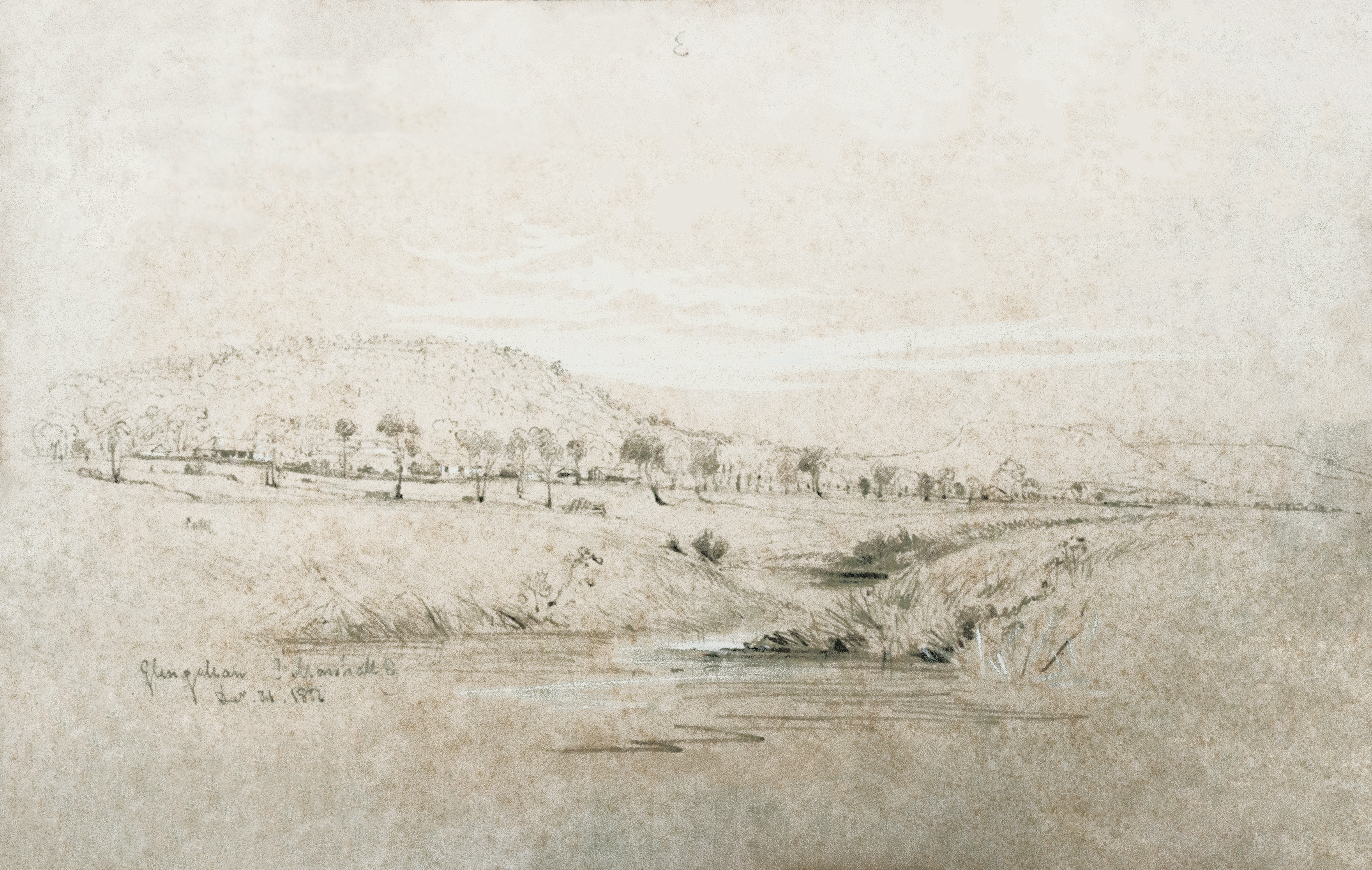

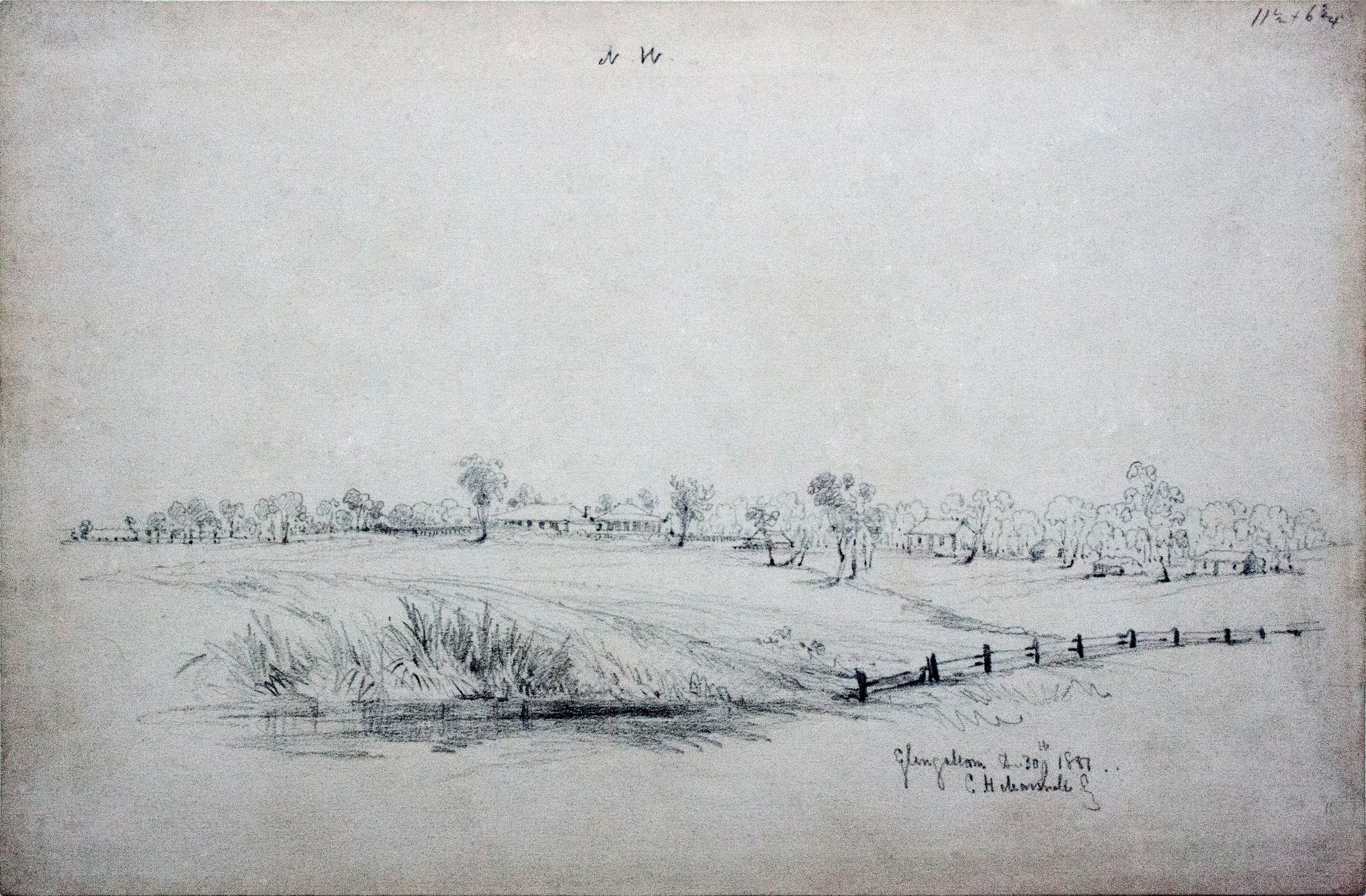





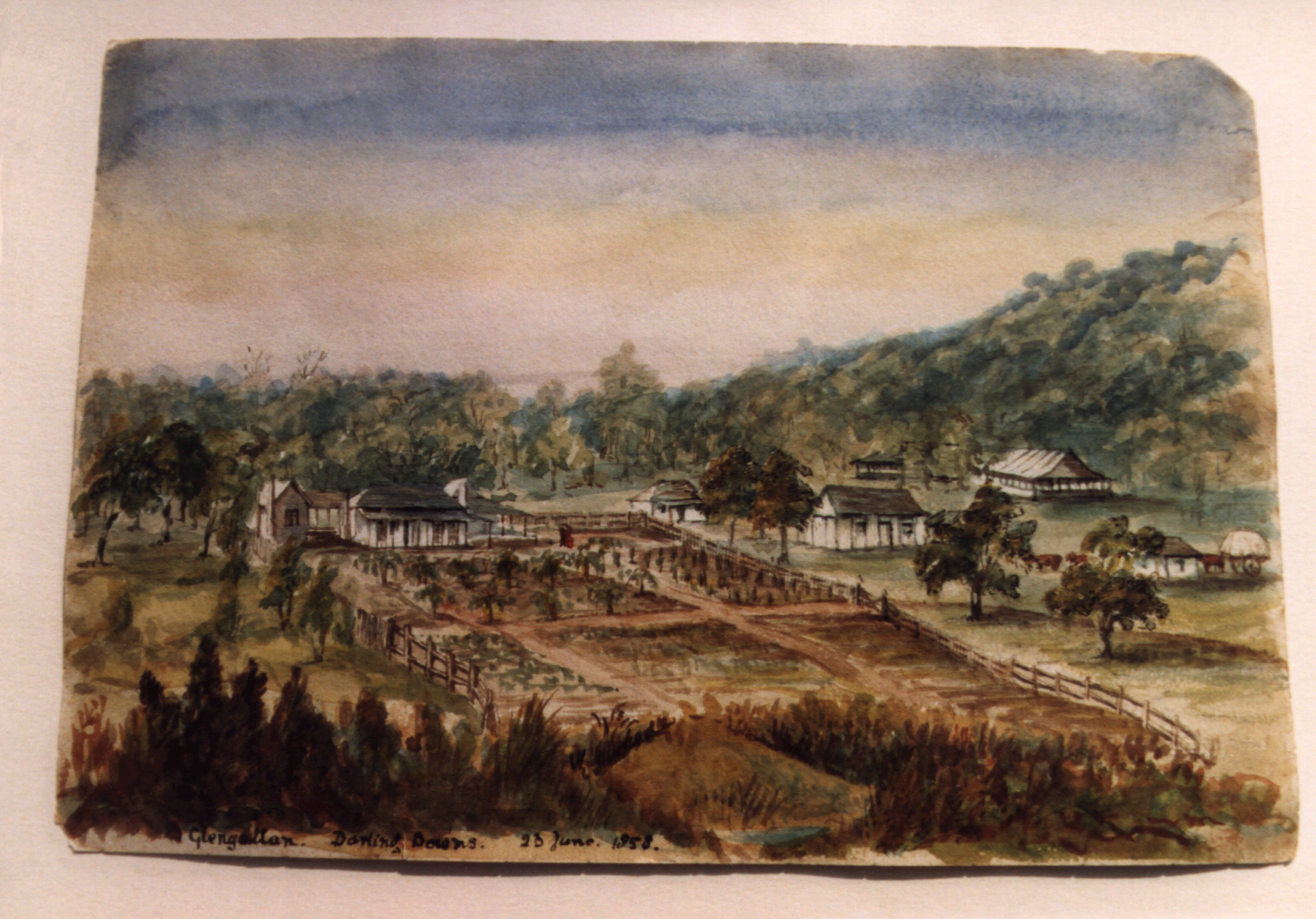
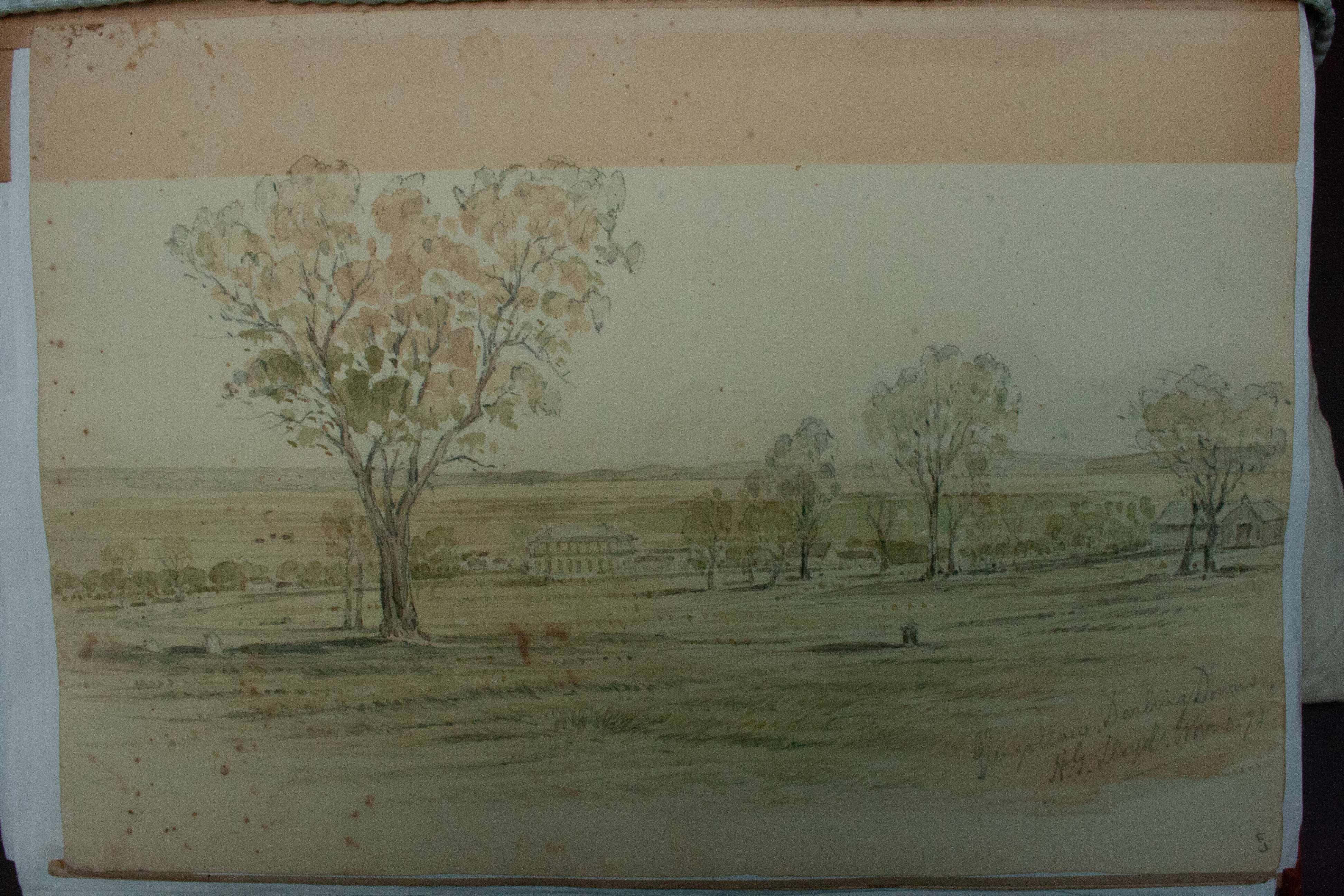



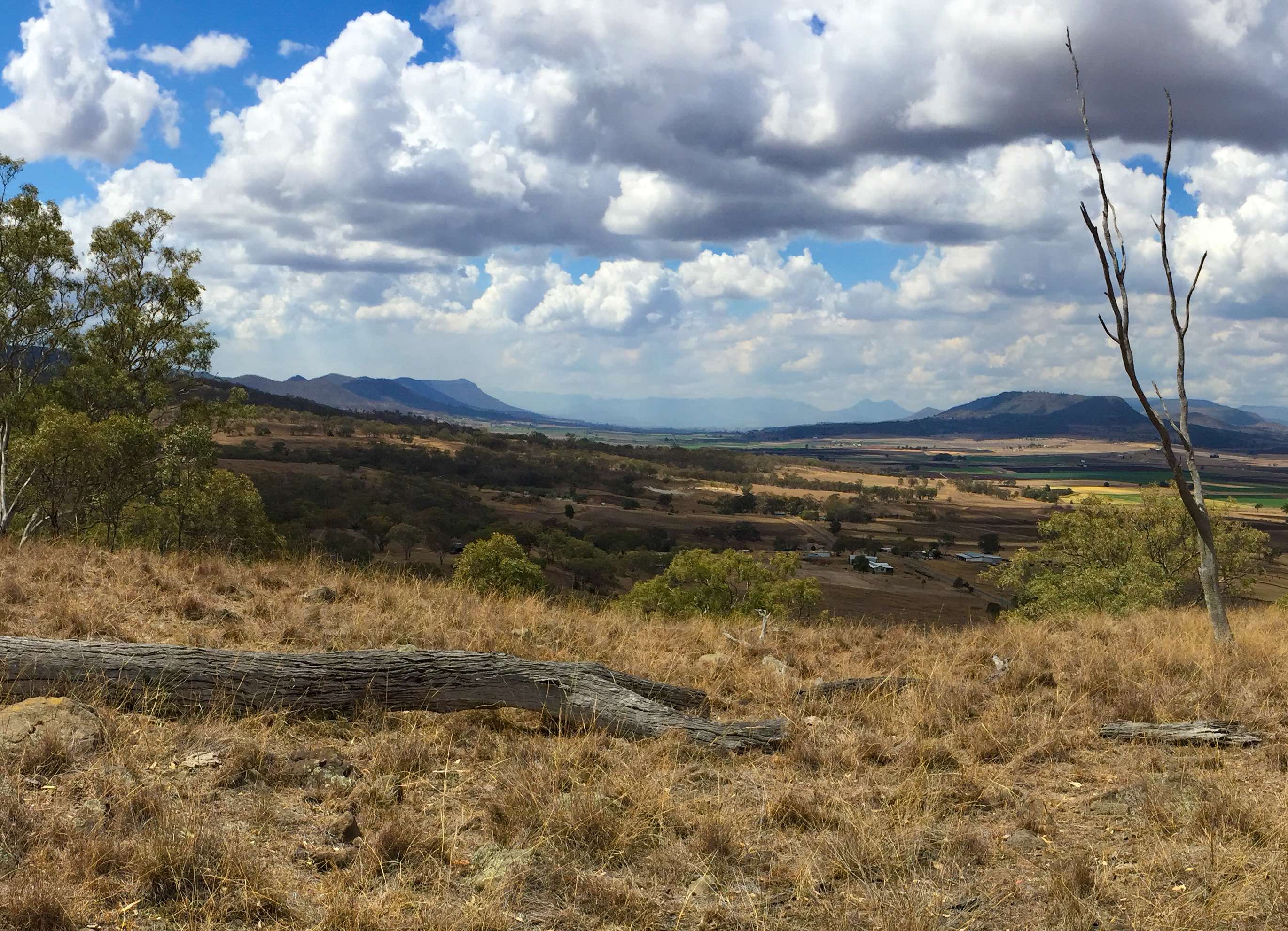



Hello, I have a 1886 watercolor by a Hollis Lloyd. His composition, subject matter reminds me of Henry Grant Lloyd. Could he possibly be a Australian or New Zealand artist? Appreciate any information and can provide photograph of painting. Thank you.
Kay, I am sorry, but I can’t help you. I have never heard of Hollis Lloyd and know nothing about him